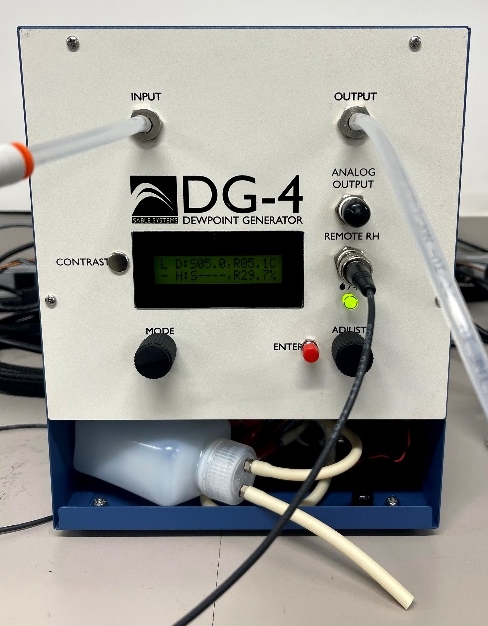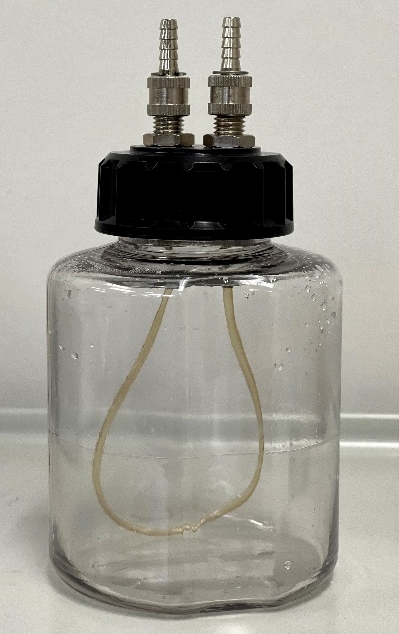PDF: Using the Sable Systems DG-4 to set the H2O span for LI-COR gas analyzers
(TechTip_Using-Dewpoint-Generator-for-H2O.pdf)
Download this content as a pdf.
The Sable Systems DG-4 Dewpoint Generator (https://www.sablesys.com/products/classic-line/dg-4-dewpoint-generator/) can be used to set the water vapor span for several LI-COR gas analyzers. The DG-4 uses a temperature-controlled metal condenser to remove moisture from the incoming air stream. It uses a peristaltic pump that is periodically activated to pump out the condensate.

Be sure to allow sufficient time when performing water calibration - typically more than 20 minutes. Water molecules will adsorb and desorb from the walls of surfaces and will take time to equilibrate. Do not rush through the calibration process. Also, try to minimize the length of tubing used.
The DG-4 has two operating modes: Dewpoint Control Mode and Relative Humidity Control Mode. For gas analyzer calibration, use Dewpoint Control Mode. This is the default setting for the DG-4, but it is also easy to set by using the knob labeled MODE. Once the mode is selected, the target dewpoint is set by switching the Mode knob to Set Point and using the Adjust knob. Be sure to press the Enter button for the change to take effect.

For most gas analyzer span calibrations that are done in the lab, we recommend using a target dewpoint that is 2 to 3 °C below the ambient air temperature. That means the target dewpoint will be between 15 and 20 °C. Because the DG-4 operates as a drier, the input air stream must have a higher dewpoint than the desired target dewpoint. To achieve this dewpoint on the DG-4, the input air stream must be humidified by using the bubbler bottle supplied with the device (Figure 2). This allows for the use of dewpoints higher than ambient air.
Establishing air flow
Air flow can be driven by a tank of compressed air, a gas analyzer internal pump, or an external pump.
Built-in pump
If the gas analyzer has a built-in pump, the pump can be used to draw the air through the DG-4.
Compressed air tank
Compressed air from a cylinder can be used to drive the flow of air. The air can pass through the bubbler bottle and the DG-4 to generate a stream of air with the desired dewpoint. The flow should not exceed more than 2 liters per minute (LPM). For most LI-COR gas analyzers, a flow rate of 0.5 LPM is sufficient.
External pump
Alternatively, an external pump such as the SS4 pump or another user-supplied pump can be used to drive air through the bubbler and the DG-4.
Once air flow through the bubbler and the DG-4 is established, connect the outlet of the bubbler to the INPUT port of the DG-4. Flow from the OUTPUT port can then be connected to the analyzer. The DG-4 display should show the dewpoint temperature setting as S and the current dewpoint temperature as R. You can also monitor the readings of the gas analyzer to check for stability.
By default, the condensate pump is active for 10 seconds every minute. When the pump is active, the dewpoint output changes for a few seconds, and this can interfere with the calibration calculation. The schedule should be adjusted so the pump runs for only a few seconds out of every 20 minutes.
In general, if the analyzer is working nominally and is well maintained, the dewpoint readings before calibration should be close to the output (set point). Any large deviations, >10% for example, indicate there maybe additional problems with the analyzer that should be addressed before proceeding with the calibration. Once the readings on the analyzer are stable, use the calibration function in the analyzer software to do a span calibration.